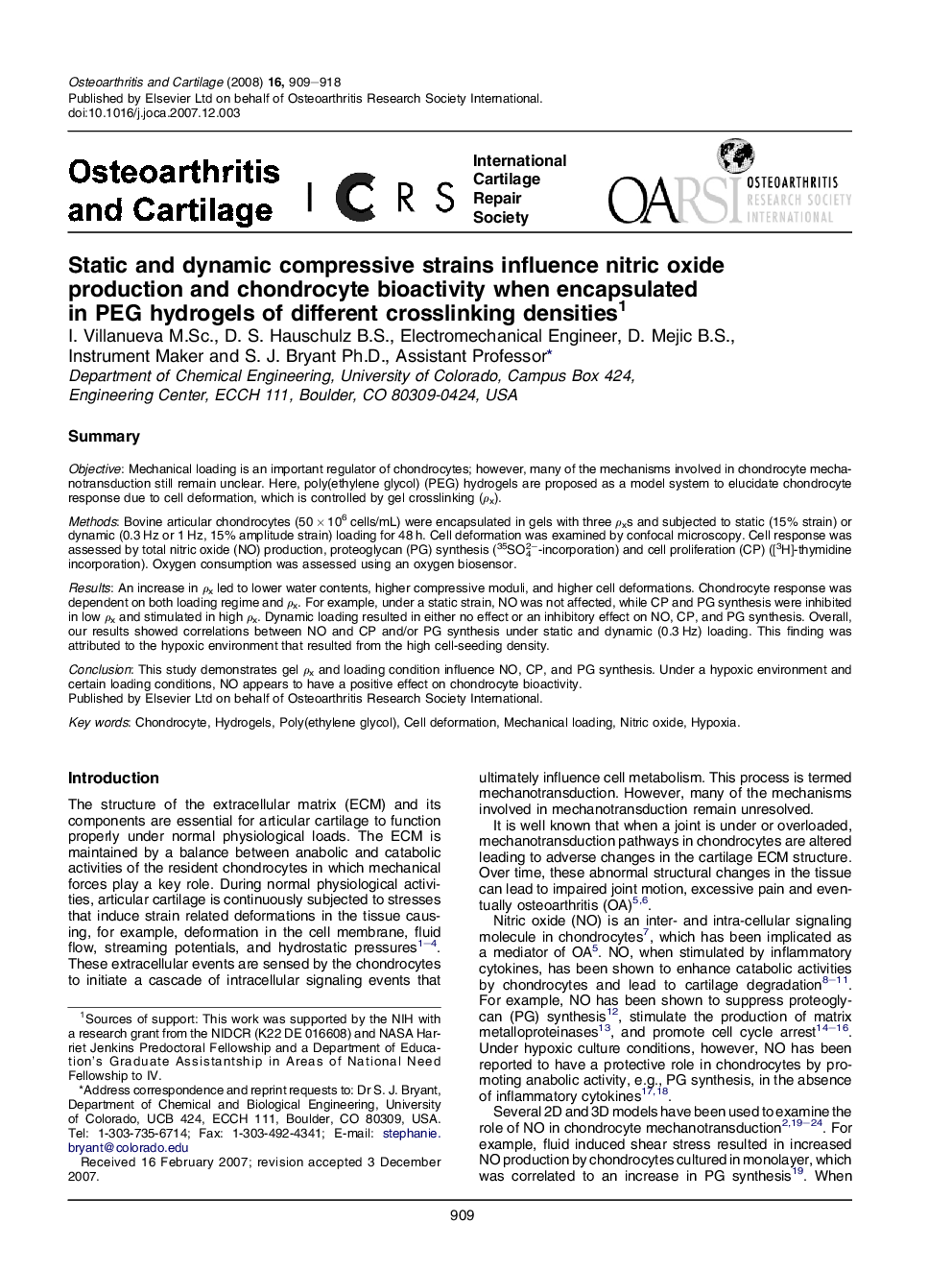| Article ID | Journal | Published Year | Pages | File Type |
|---|---|---|---|---|
| 3381444 | Osteoarthritis and Cartilage | 2008 | 10 Pages |
SummaryObjectiveMechanical loading is an important regulator of chondrocytes; however, many of the mechanisms involved in chondrocyte mechanotransduction still remain unclear. Here, poly(ethylene glycol) (PEG) hydrogels are proposed as a model system to elucidate chondrocyte response due to cell deformation, which is controlled by gel crosslinking (ρx).MethodsBovine articular chondrocytes (50 × 106 cells/mL) were encapsulated in gels with three ρxs and subjected to static (15% strain) or dynamic (0.3 Hz or 1 Hz, 15% amplitude strain) loading for 48 h. Cell deformation was examined by confocal microscopy. Cell response was assessed by total nitric oxide (NO) production, proteoglycan (PG) synthesis (35SO42−-incorporation) and cell proliferation (CP) ([3H]-thymidine incorporation). Oxygen consumption was assessed using an oxygen biosensor.ResultsAn increase in ρx led to lower water contents, higher compressive moduli, and higher cell deformations. Chondrocyte response was dependent on both loading regime and ρx. For example, under a static strain, NO was not affected, while CP and PG synthesis were inhibited in low ρx and stimulated in high ρx. Dynamic loading resulted in either no effect or an inhibitory effect on NO, CP, and PG synthesis. Overall, our results showed correlations between NO and CP and/or PG synthesis under static and dynamic (0.3 Hz) loading. This finding was attributed to the hypoxic environment that resulted from the high cell-seeding density.ConclusionThis study demonstrates gel ρx and loading condition influence NO, CP, and PG synthesis. Under a hypoxic environment and certain loading conditions, NO appears to have a positive effect on chondrocyte bioactivity.
